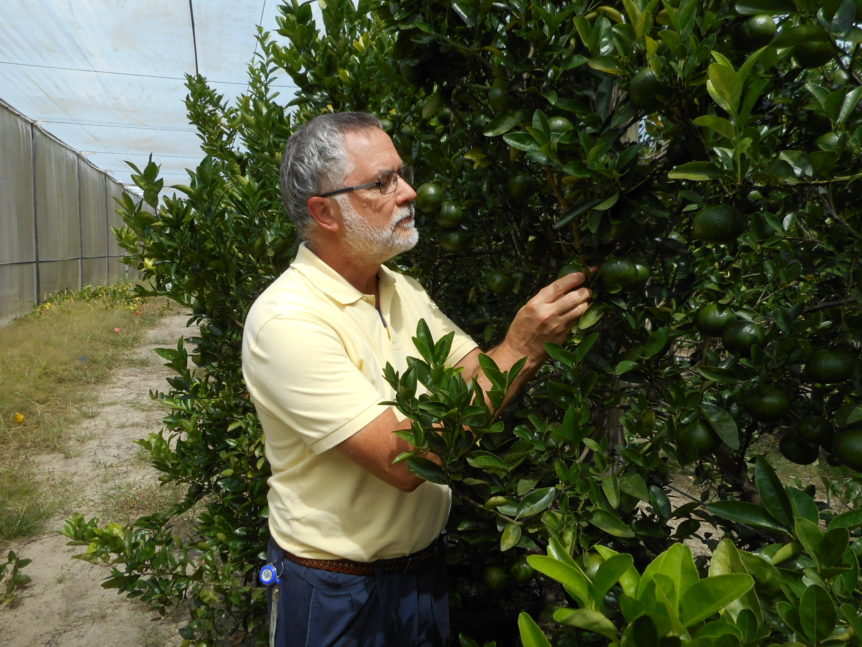
Growers use the citrus under protective screen (CUPS) production system to protect trees from the Asian citrus psyllid, the insect vector of HLB disease. While grapefruit is most commonly grown in CUPS, statistics support the belief that CUPS can be conducive to other types of citrus.
“There’s a need to establish the growing requirements and the needs of other varieties. Most of the CUPS commercially grown is grapefruit. It has been very successful, but there’s a desire to have other varieties,” said Arnold Schumann, University of Florida Institute of Food and Agricultural Sciences professor at the Citrus Research and Education Center. “There’s a pretty large effort to expand the scope of what’s grown in CUPS and to make sure they’re of quality.”
According to Schumann, Valencia oranges have shown “excellent quality” under CUPS production.
“We have mature trees of Valencia that are 10 years old. The fruit was harvested in March, which is typical Valencia season. Total soluble solids (TSS) were 13.9 degrees Brix. Acid was 0.63%, giving a ratio of TSS to acid of 22. That amounted to 7.2 pounds of solids per box,” Schumann said. “With HLB, you would struggle to get even 10 TSS; pounds solids would be 6 or less.”
Younger Valencia trees that are less than 3 years old produced a TSS of 8.5 with acid of 0.46% and ratio of 19, added Schumann.
Another benefit of CUPS, he said, is the lack of fruit drop. “There is no fruit drop if you can keep the HLB out, unless it’s a variety that is susceptible to cracking or splitting of the peel.”
In addition to Valencia, research has also generated positive results with other commercial varieties like Sugar Belle, Temple, Dancy and Early Pride, except for its splitting.
Growers contemplating the CUPS system still need to utilize the proven varieties more than those still in the research phase, advised Schumann.
“If I were to invest in CUPS, what I would do is put the majority of it in a reliable variety that’s proven like red grapefruit; let’s say 75%. That’s your workhorse,” Schumann said. “It will ensure you’re going to make a profit. You would put these other varieties in the remaining 25%; those that are really attractive but have some greater risk factors. That way you’re not putting all of your money into a risky variety. You’re putting most of it into the truly reliable one, but you’re getting a large substantial production of these other very attractive varieties.”

By Clint Thompson










